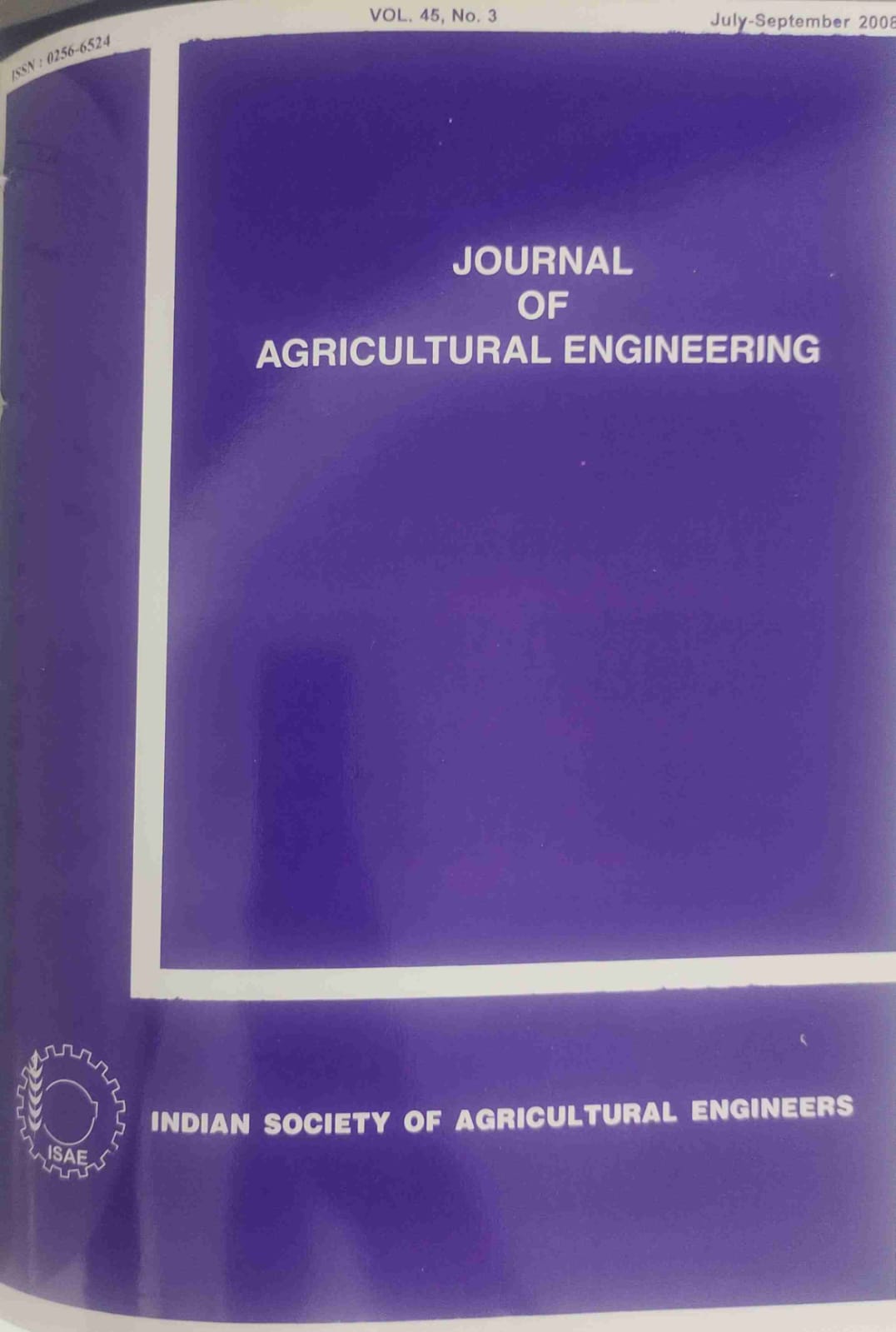Ergonomic Evaluation of Foot Operated Rotary Power Generation
DOI:
https://doi.org/10.52151/jae2008453.1334Abstract
Large number of farm machines and hand tools used on Indian farms require rotational power for operatioJ1. In India, human energy is extensively used as main source of power to operate farm equipment for low power requirement «75 W) in different modes including rotational mode. An ergonomic evaluation of foot operated rotational power generation in different modes namely; pedal, stepper and bicycle at five mechanical output conditions was carried out. During experiments, physiological and postural parameters were evaluated. Up to 55.9W of mechanical power output in bicycle mode of operation was found to be the best. At 74.6W of mechanical power output, stepper mode of operation was better than other modes. At no load and 18.6W of mechanical output, the overall discomfort score was the lowest in bicycle mode. At 37.3,55.9 and 74.6W mechanical outputs, overall discomfort score was lowest in stepper mode. The human efficiency was the highest in bicycle mode of operation at 18.6, 37.3 and 55.9W of mechanical output conditions but at 74.6W mechanical output condition, highest human efficiency was obtained in stepper mode.
References
th Livestock Census, All India Summary Report. 2003. Department of Animal Husbandry, Ministry of Agriculture, Govt of India.
Bobbert A C. 1960. Physiological comparison of three types of ergometry. J. Applied Physiology, 15, 10071014.
Corlett EN; Bishop R P. 1976.Atechnique for assessing postural discomfort. Ergonomics, 19, 175-182.
Davies C T M; Harris E A. 1964. Heart rate during transition from rest to exercise in relation to exercise tolerance. J. Applied Physiology, 19, 857-862.
Inbar 0; Dotan R; Trousit T; Dvir Z. 1983. The effect of bicycle crank- length variation upon power performance. Ergonomics, 26, 1139- 1146.
Kroemer KHE; Grandjean E. 2000. Fitting the task to the Human. A text book of occupational ergonomics, Fifth Ed., Taylor & Francis Ltd., UK.
Marais G; Dupont L; Maillet M; Weissland T; Vanvelcenaher J; Pelayo P. 2002. Cardio respiratory and efficiency responses during arm and leg exercises with spontaneously chosen crank and pedal rates. Ergonomics, 45, 631-639.
Martitz J S; Morrison J F; Peter J; Strydom N B; Whyndham C H. 1961.A practical method of estimating individual's maximal oxygen uptake. Ergonomics, 4, 97.
Nag P K; Sebastian N C; Malvanker M G. 1980. Occupational workload of Indian Agricultural workers. Ergonomics, 23, 91-102.
Passmore R; Durrnin J. 1955. Human energy expenditure. Physiological Reviews, 35, 801-875.
Pendergast D R.1989. Cardiovascular, respiratory and metabolic responses to upper body exercise. Medicine and Science in Sports and Exercise, 21, S121- S125.
Powers S K; Beadle R E; Mangum M. 1984. Exercise efficiency during arm ergometry: Effect of speed and work rate. J. Applied Physiology: Respiratory Environment and Exercise Physiology, 56, 495- 499.
Saha P N; Datta S R; Banerjee P K; Narayane G G 1979. An acceptable workload for Indian workers. Ergonomics, 22, 1059-1071.
Seidel H; Bastek R; Brauer D; Buchholz C H; Meister A; Metz A M; Rothe R. 1980. On human response to prolonged repeated whole body vibration. Ergonomics, 23,191-211.














